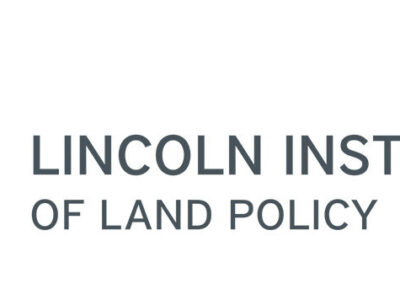Lincoln Institute of Land Policy
Land Lines July 2022
How to Fend Off Land Speculation
PRESIDENT‘S MESSAGE GEORGE W. MCCARTHY
Excerpts:
CLIMATE CHAOS IS AFFECTING PEOPLE EVERYWHERE AROUND THE WORLD, including in the United States, and it is far past time to do something about it. The transition to net-zero emissions will require unprecedented changes in land use and encumber similarly unprecedented investments.
Since our inception more than 75 years ago, the Lincoln Institute has obsessed over how land gets its value. In the last few years, we’ve tracked an exponential increase in interest in the potential of land value capture—the public recovery of the share of land value attributable to public actions. Places as diverse as Seoul, Korea, and São Paulo, Brazil, have shown how land value capture can pay for essential but seemingly insurmountable infrastructure needs.
But while the public sector strives to capture its rightful share of publicly generated land value, private landowners are walking away with even bigger spoils by arbitraging information, something that arguably exerts greater power in determining the value of land.
Information lies at the root of private land value capture, often called naked speculation, which has financed land development for centuries. Everyone knows the three biggest determinants of land value: location, location, location. The salient information for land speculation is advance knowledge of what will happen in specific locations.
In the 1960s, the Walt Disney Company used shell companies to secretly purchase 27,000 acres of Central Florida swampland at an average cost of $200 per acre to build its Walt Disney World resort. Disney needed only 10,000 acres for the development, but it knew that news of its investment would drive up land prices for the whole region. The company kept its intentions under wraps to capture the land value increment for itself, while it also negotiated with the State of Florida for unprecedented private control of development on its lands. (That agreement is now in peril due to political conflicts with the state.) Once the future development was announced, the same land was valued at $80,000 per acre, a tidy windfall of more than $2 billion on an investment of just over $5 million. Disney leased the extra land to cover the costs of expanding its attractions to include the EPCOT center, among other things.
Every dollar gained by land speculators represents an additional dollar of public, private, or philanthropic investment that will be needed to protect critical habitat or mitigate the climate crisis. If policy makers are serious about mitigating climate change or conserving land and water resources, they cannot allow private investors to stay 10 steps ahead of the public.
There is one easy way to prevent the astronomical windfalls of land speculation. Among the many effective land policy instruments we’ve studied, the land value increment tax (LVIT)—a well-known and well-tested tool—is best for minimizing land speculation. A tax on realized unearned gains in land values, the LVIT has been applied at rates as high as 90 percent in places like Taiwan, where the tax now ranges from 40 to 60 percent. The revenues generated by the LVIT can be invested in climate resilience or habitat protection, ensuring that increases in land value are used for public benefit.
Why would we unwittingly allow others to inflate the cost of our efforts for their own private windfalls? We already know the remedy we need to chill land speculation—an aggressive LVIT. Can we summon the courage to use it?



